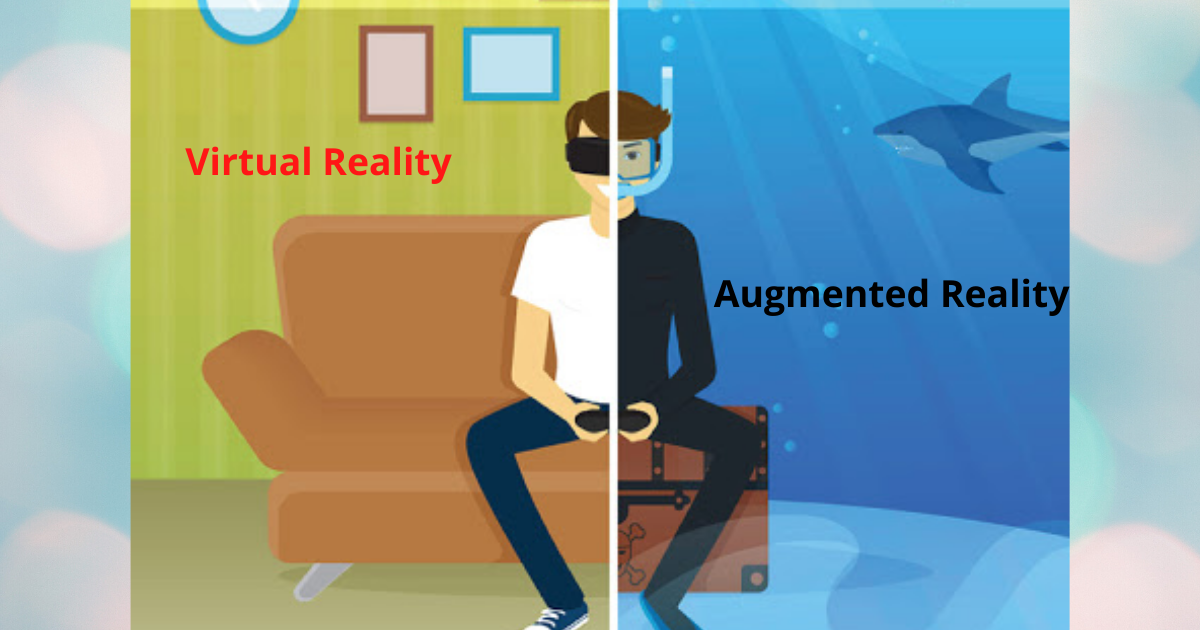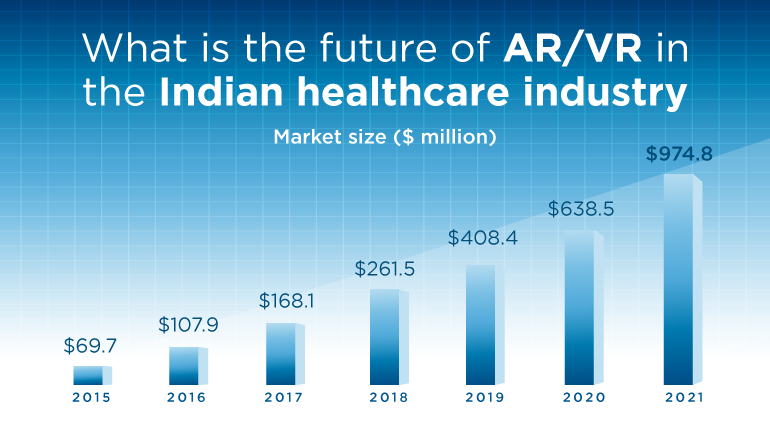What is Virtual Reality and Augmented Reality –
Virtual Reality (VR) and Augmented Reality (AR) are two technologies that have gained a lot of attention in recent years, particularly in the fields of entertainment, education, and business. Both technologies aim to enhance the user’s experience by creating immersive environments, but they differ in how they achieve this goal.

Virtual Reality (VR) involves creating a completely artificial digital environment that users can interact with using specialized equipment such as a headset, gloves, and sensors. The user’s entire field of vision is filled with a computer-generated world that responds to their movements and actions, creating a sense of being fully immersed in a different reality. VR technology is widely used in gaming and entertainment, as well as in training simulations for industries such as aviation and medicine.
Augmented Reality (AR), on the other hand, enhances the user’s perception of the real world by overlaying digital information onto the user’s view of the physical world. This is typically achieved through a mobile device or smart glasses that use a camera and sensors to detect the user’s location and orientation. AR technology can be used to provide contextual information, enhance navigation, or create interactive experiences that blend the digital and physical worlds. It has applications in fields such as advertising, retail, and education.
Both VR and AR have the potential to revolutionize the way we interact with technology and each other, and as the technology continues to evolve, we can expect to see even more exciting developments in the years to come.
Advadvantages of Virtual Reality and Augmented Reality –
Virtual Reality (VR) and Augmented Reality (AR) offer a wide range of advantages across various industries and fields, including:
Enhanced immersive experience: VR and AR offer users a fully immersive experience that allows them to interact with digital objects and environments in a way that feels real. This makes them ideal for entertainment, education, and training purposes.

Increased engagement: By creating an interactive and engaging experience, VR and AR can increase user engagement and retention. This can be particularly useful for marketing, education, and training purposes.
Real-world applications: AR can be used to enhance real-world experiences by overlaying digital information onto the physical world. This has applications in industries such as tourism, navigation, and retail.
Improved efficiency: VR and AR can be used to simulate real-world scenarios and environments, allowing for more efficient and cost-effective training and testing. This is particularly useful in industries such as aviation, medicine, and manufacturing.
Increased safety: By allowing users to train and practice in a virtual environment, VR and AR can help reduce the risk of injury or damage in high-risk industries such as aviation and medicine.
Enhanced collaboration: VR and AR can be used to create collaborative virtual environments, allowing users to interact with each other in a shared digital space. This has applications in industries such as architecture, engineering, and design.
Overall, VR and AR offer a range of benefits and have the potential to revolutionize the way we interact with technology and each other. As the technology continues to evolve, we can expect to see even more exciting applications and advancements in the future.
Applications of Virtual Reality and Augmented Reality –
Virtual Reality (VR) and Augmented Reality (AR) have numerous applications across various industries. Here are some examples:
- Gaming: VR and AR are widely used in gaming, allowing players to immerse themselves in a virtual world and interact with it in real-time.
- Education and Training: VR and AR are increasingly being used in education and training to create immersive learning environments. For instance, medical students can use VR to practice surgeries, pilots can use it to simulate flying, and firefighters can use it to simulate rescue operations.
- Real Estate: VR and AR are revolutionizing the way properties are being marketed and sold. With VR, prospective buyers can take virtual tours of properties and get a sense of what they look like in real life. AR can also be used to overlay virtual furniture onto a real-world room, giving buyers a sense of how the space could be furnished.
- Tourism and Travel: VR and AR can provide a virtual travel experience, enabling tourists to explore destinations before they book their trips. For example, virtual tours can be created for museums, landmarks, and other tourist attractions.
- Healthcare: VR and AR are being used in healthcare to treat patients with anxiety disorders and other mental health conditions. For example, VR can be used to simulate real-world situations that patients may find anxiety-provoking, such as public speaking or flying on an airplane.
- Advertising and Marketing: VR and AR can be used to create immersive advertising experiences that engage customers. For example, a clothing brand could create a virtual fashion show where customers can try on outfits and see how they look in 3D.
Overall, VR and AR have enormous potential to transform various industries by creating more engaging and immersive experiences for customers and users.
The future of AR and VR:

The future of Augmented Reality (AR) and Virtual Reality (VR) is exciting and full of potential. Here are some of the trends and developments we can expect to see in the coming years:
- Improved Hardware: AR and VR hardware, such as headsets and controllers, are expected to become lighter, more comfortable, and more affordable. This will make it easier for consumers and businesses to adopt these technologies.
- Advancements in Software: Software is expected to become more sophisticated, allowing for more realistic and immersive experiences. This includes improvements in graphics, artificial intelligence, and natural language processing.
- Expansion into New Markets: AR and VR are expected to move beyond their current applications, such as gaming and entertainment, into areas such as education, healthcare, and retail.
- Increased Integration with IoT: AR and VR will become more integrated with the Internet of Things (IoT), enabling users to interact with real-world objects and devices in new ways.
- Use of AR and VR for Remote Collaboration: AR and VR will enable remote teams to collaborate in virtual environments, improving communication and productivity.
- Enhanced Mobile AR: With the widespread use of smartphones, AR is expected to become more prevalent on mobile devices. This includes the use of AR in social media, shopping, and navigation apps.
- Development of New AR and VR Devices: Companies are exploring new forms of AR and VR devices, such as AR glasses, contact lenses, and brain-computer interfaces.
Overall, AR and VR are expected to continue to evolve and become more mainstream in the coming years, opening up new opportunities for businesses and consumers alike.
The example of AR and VR:

Here are some examples of how Augmented Reality (AR) and Virtual Reality (VR) are being used today:
- Pokémon GO: Pokémon GO is a popular mobile game that uses AR to overlay virtual creatures onto real-world environments. Players can use their smartphones to catch and collect these creatures, which appear as if they are in the real world.
- IKEA Place: IKEA Place is an AR app that allows users to see how furniture would look in their homes before they buy it. The app uses the camera on a smartphone to create a virtual image of a room, which users can then fill with furniture from IKEA’s catalog.
- Virtual Tours: VR is being used to create virtual tours of museums, art galleries, and other cultural institutions. Users can explore these spaces as if they were actually there, without having to travel to the physical location.
- Medical Training: VR is being used to train medical professionals in surgery and other procedures. The technology allows students to practice and simulate surgeries in a virtual environment, improving their skills and reducing the risk of errors during real procedures.
- Virtual Meetings: With the pandemic forcing people to work from home, VR is being used to create virtual meeting spaces. These spaces allow people to interact with each other as if they were in the same physical location, improving collaboration and communication.
- AR Navigation: AR is being used to enhance navigation apps by overlaying directional arrows and other information onto real-world environments. This makes it easier for users to navigate unfamiliar areas.
Overall, AR and VR are being used in a wide range of industries and applications, demonstrating the versatility and potential of these technologies.

Good day! I know this is kinda off topic
however I’d figured I’d ask. Would you be interested in trading links or maybe guest authoring a blog
post or vice-versa? My blog goes over a lot of the same subjects as yours and I believe we could greatly benefit from each other.
If you happen to be interested feel free to send me an e-mail.
I look forward to hearing from you! Wonderful blog by the way!
LikeLike
👍
LikeLike
Excellent
LikeLike
What’s Going down i am new to this, I stumbled upon this I’ve found It absolutely helpful
and it has aided me out loads. I hope to contribute & assist other users like its
aided me. Good job.
LikeLike
Paragraph writing is also a excitement, if you know after that you can write
or else it is complicated to write.
LikeLike